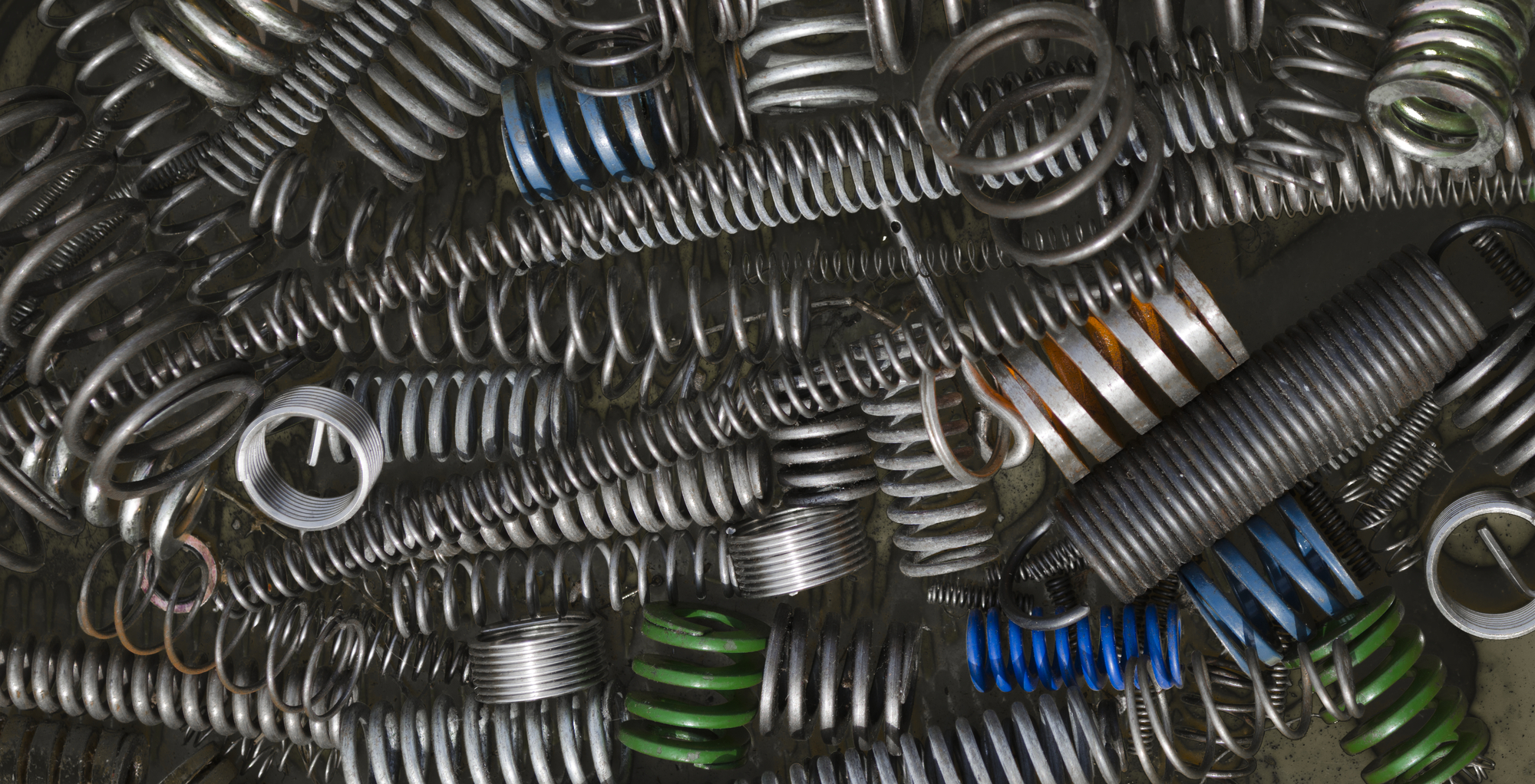Everything To Know About Custom Compression Springs
Compression Springs
A compression spring is a type of spring that is designed to compress and push apart two objects. The spring is made up of coils that are wound in a circular fashion. The coils can be either conical, cylindrical, or a combination of both, in shape. The diameter of the spring along with the diameter of the material and material type, will determine how much force is required to compress it. Custom springs can be made to specific sizes and specifications.
What Are Compression Springs?
Compression springs are a type of spring that is typically used in industrial applications. These springs are designed to compress or push back against applied force. Compression springs are made from a variety of materials, including steel, stainless steel, and brass. They can be found in a variety of sizes and shapes, depending on the application.

Types of Compression Springs
Compression springs are one of the most common types of springs used in a variety of applications. They are made from a variety of materials, including metal, and come in a variety of sizes and shapes. The most common type of compression spring is the coil spring, which is made from a single piece of metal wire that is coiled around itself. Other types of compression springs include conical springs, variable pitch springs, and tapered springs.
Compression Spring Manufacturing
Springs are made by a process of coiling steel wire into a helix. The spring is then typically heat-treated to give it its final shape and properties. Some springs are then post-processed by grinding the ends, plated, oiled, or processed in other ways.
Compression springs are made by winding a wire around a mandrel (a rod with a hole through the center) to form a coil or by applying pressure to one side as it is fed through the spring machine. Sometimes, the ends of the coil are then ground or machined to the desired shape.
The free length of a compression spring is the length of the spring when it is not under any load. The specification for a compression spring includes the free length, the wire diameter, the inside diameter of the coil, and the number of coils.
At Ocean Springs, we can customize springs to your exact specifications. To submit an RFQ (Request For Quote), please click here.
Configurations & Characteristics
Compression springs are one of the most common types of springs used in a variety of applications. They are typically made from round wire and can be either straight or coiled. The spring is compressed when it is used, so the solid height is important to consider. Compression springs can be used in a variety of configurations, depending on the application.
How To Measure Your Compression Spring
To measure your compression spring, you will need to first identify the type of spring it is. Two types of compression springs areonical and cylindrical. Conical springs have a tapered body, while cylindrical springs have a round body. Once you have identified the type of spring, you will need to measure the outside diameter (OD) and inside diameter (ID) of the spring. To do this, you will need calipers or a micrometer. The OD is the distance between the outermost coils of the spring, while the ID is the distance between the innermost coils of the spring.
Compression Spring Design
Compression spring design is the process of creating a custom spring that is optimized to meet the specific requirements of the application. The important factors are the amount of force required for the spring, force profile, the available space in the design, desired cost, and expected volume used per year. With this information, a spring design can be specified and tested.
Compression Spring Diagrams
Compression spring diagrams are a great way to visualize how a spring works. They can be used to show the spring in its free length, diameter, and number of coils. They can also be used to show how it is compressed and the spring constant. Manufacturers, like Ocean Springs, can use these diagrams to custom design and manufacture springs for specific applications.
Compression Spring Specifications
A compression spring is a coil that is used to compress or push down on an object. The diameter of the spring is determined by the amount of force needed to compress it. The wire diameter is also important because it affects the amount of force required to compress the spring. The outside diameter of the spring is also important because it affects the amount of space the spring can take up. The free length is the length of the spring when it is not compressed. The solid height is the length of the spring when it is fully compressed. The number of coils is also important because it affects the amount of force required to compress the spring as well as affects the force profile.
Compression Spring Finder
If you are looking for a specific size or shape compression spring, then you will need to request a quote from Ocean Springs.
Ordering Custom Compression Springs
Compression springs are often made to meet the specific needs of a particular application. The most important parameters for a compression spring are its free length, its diameter, and its solid height. The free length is the overall length of the spring when it is not compressed. The diameter is the thickness of the wire used to make the spring. The solid height is the height of the spring when it is fully compressed.
Custom compression springs can be made from a variety of materials, including steel, stainless steel, and titanium. They can also be coated with a variety of finishes to resist corrosion and wear.
Compression springs can be either conical or cylindrical. Conical springs have a tapered shape, while cylindrical springs have a uniform diameter throughout their length. Conical springs are more efficient than cylindrical springs because they can store more energy in a given space. However, they are also more difficult to manufacture.
Custom compression springs can be made from a variety of materials, including steel, stainless steel, and titanium. They can also be coated with a variety of finishes to resist corrosion and wear.
Related Categories to Compression Springs
Some other types of springs we can help with:
Torsion Springs
Coil Springs
Conical Springs
Tapered Springs
Extension Springs

